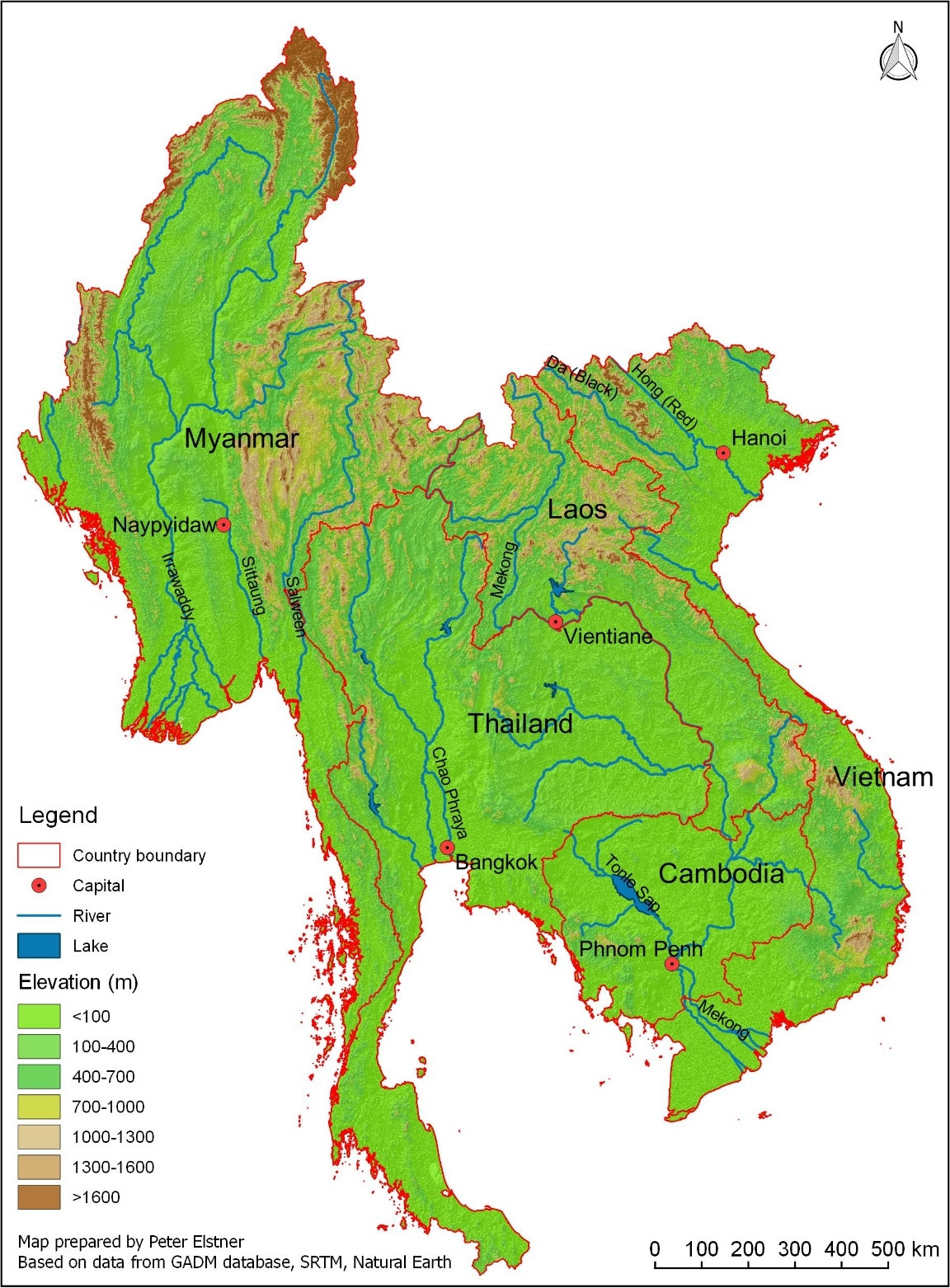Soils of Mainland Southeast Asia

[
We have been looking for a reference guide to the soils of Southeast Asia for some time, and in the past have had to rely upon the fragmented soil classifications provided by most Southeast Asian countries. Those guides tended to include old data and were certainly not interactive. In this article, Peter Elstner explores the Digital Soil Map of the World and the resulting seven major soil classes of Southeast Asia. Soils are the backbone and foundation for all sustainable agriculture and development, and knowing the type of soil in your community is essential for knowing the types of crops, development, and land use that can occur there. Be sure to check out the Reference Soil Groups (starting on page 7 for more information). We hope that this guide will inspire you to explore the Digital Soil Map and learn more about the soils in your area.]
General Overview: Soils of Mainland Southeast Asia
This report describes and analyzes the soil distribution and characteristics of the main soil types in Mainland Southeast Asia (MSEA) that comprise the countries of Cambodia, Lao PDR, Myanmar, Thailand, and Vietnam (Map 1).
Geography
Mainland Southeast Asia (MSEA) is characterized by mountain ranges in the north, large plains and plateaus in the south, and large river systems that run from the mountains through the plains to the sea.
The mountains along the border with China stretch mostly from north to south with elevations up to 5,800 meters. These mountains are the source of the large rivers, most importantly the Mekong, which runs through all countries, and the Irrawaddy in Myanmar. Both rivers spread into wide deltas before reaching the sea. Other important rivers are the Chao Phraya River in Thailand, the Salween and Sittaung rivers in Myanmar, and the Red River in Vietnam. Extensive fertile lowland plains along these rivers are highly suited for wet-rice cultivation. The center of Cambodia is dominated by a lacustrine plain formed by the inundations during the flooding of the Tonle Sap (Great Lake).
Climate
The climate in MSEA is normally determined by the monsoon. The cold, dry season from October to February is determined by the northeast monsoon and the hot, wet season from May to September by the southwest monsoon. The intermonsoon season in March and April is very hot and dry. Rainfalls are infl uenced by the orientation of main mountain ranges such as the Tenasserim Mountains in eastern Myanmar, and the Annam chain in Vietnam (FAO 1979). This means the central zone of Myanmar, Thailand and Southern Indo-China are located within the rain-shadow region and have a dryer climate. Average temperatures are nearly uniform (around 27°C) throughout the year in the southern region of MSEA (south of 17°N latitude). Inland areas in the northern region, with increasing latitude, have a yearly average temperature range from 20 to 30°C. These areas also have large variation in mean daily temperature, due to their continentality. Increasing altitude also reduces high summer temperatures and humidity. Northern Vietnam, Laos and the Myanmar Himalayas have a subtropical climate with relatively cold mean temperature below 15°C in winter (FAO 1979).
Data Sources and Data Availability
The Digital Soil Map of the World from the FAO (2007) provides comprehensive soil data for the whole world. The first version of these data was published in 1979 by FAO. Location, area, and distribution of soil types remain very similar – only the data structure and information were improved. The FAO uses its own soil classifi cation described in the “World Reference Base for Soil Resources” (FAO 2014) most recently updated in 2015. The WRB distinguishes 32 Reference Soil Groups (RSGs), which are the main soil types.
A detailed description of the RSG’s characteristics, management and use can be found in “Lecture Notes on the Major Soils of the World” (FAO 2001) as well as in “World Reference Base for Soil Resources” (FAO 2014).
A very useful source to visualize and obtain data for soil and soil characteristics is the website SoilGrids (https://www.soilgrids.org), a project of ISRIC-World Soil Information (ISRIC 2016). The project combines worldwide and national data from diff erent organizations and displays them in an interactive map. The maps are spatial predictions of soil types and properties based on machine learning and global statistical models. Data for some of the maps below were obtained from SoilGrids.
The Harmonized World Soil Database (HWSD) is another source for soil information. The HWSD is the result of a collaboration between the FAO and other organizations. This raster database contains data of selected soil characteristics (e.g. organic carbon, pH, water storage capacity, soil depth, cation exchange capacity) from over 15000 soil mapping units. The Database is available for download, along with an application to view the data, from the FAO website.
Soil data and maps based on other soil classifi cations are also available for MSEA. Several countries have used, and still use, the USDA Soil Taxonomy for their soil surveys. The USDA Soil Taxonomy classifi es soils according to several parameters (most commonly their properties) and in several levels: Order, Suborder, Great Group, Subgroup, Family, and Series. USDA and WRB are comparable to some extent, and soil maps and data using the USDA Soil Taxonomy (and other less common, sometimes only descriptive soil classifi cations) are available at the national level. Even though some of these data have a higher resolution and provide more detailed information, summarizing and comparing these data within MSEA is challenging, because diff erent classifications are used and the raw data is difficult to obtain.